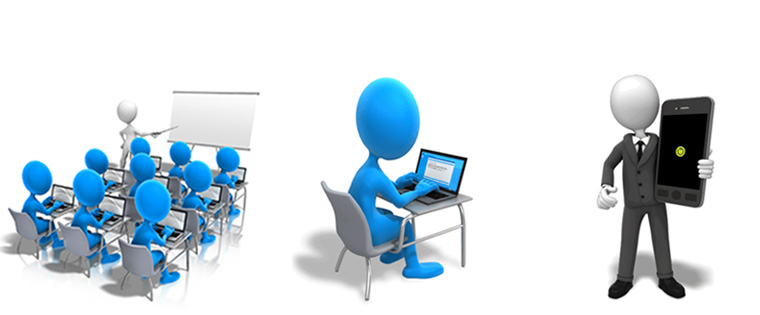5 Advantages of a Personalized Millennial Onboarding Program

Zack, a 28-year old walked into his new workplace all excited to get started on his new job. After the initial new hire orientation was complete, he had to start with the company’s online millennial onboarding program. He was asked to register for the course and choose his learning preference. Zack prefers listening to audio as compared to reading text. He was pleasantly surprised when the welcome message in the online onboarding program addressed him by name. He also loved that the millennial onboarding program had a lot of audio clips and links to podcasts in store for him.
This scenario is a simple example of personalization in the millennial onboarding program.
It’s interesting that paying attention to learners’ preferences can actually help promote the training program. Read on to know more about what you can achieve by following a personalized millennial onboarding program in your organization.
1. Impress the Millennials
First impressions matter! Onboarding begins the day the millennial is given the job offer. The impression that is created now can influence the millennial’s tenure in the organization. So grab them early. You can use microlearning modules to create personalization.
For instance if millennial A and B are new hires who are expected to join different departments Finance and Sales, imagine their excitement when they receive microlearning videos that include welcome messages from their respective department heads or functional managers. This is one way of personalizing the millennial onboarding process and it’s sure to impress. It is easy to update a microlearning course and this means personalized messages for the millennials can be included on the fly.
2. Drive Millennial Engagement
A personalized millennial onboarding program can drive employee engagement. Millennials may have different learning styles such as auditory, visual, and kinesthetic. Personalization in the millennial onboarding program finds a way to address the needs of different learner styles. For instance, when you are educating new hires on the company’s history, you could include an interactive e-learning timeline as well as an audio podcast. The information covered is the same in both cases, but the new hire is given the choice to learn about the company history in the format he wants to. This in turn drives learner engagement.
3. Provide Alternative Learning Paths
Let’s say you are through with the basic onboarding training on the company’s history, values, mission, and services, now it’s time to impart specific training related to the department and the role the millennial is hired for.
Let’s say you have a group of millennials joining the sales team. Your onboarding program includes a training on basic as well as advanced sales skills. There are some new hires who are totally new to the field while there are others with a few years of experience. Millennials who have a certain amount of work experience do not want to spend their time going through the basics of sales skills. They would prefer to take the training on advanced sales skills instead. Often, new hires have to go through training that is unnecessary and this can demotivate them.
You can personalize the onboarding program and offer new hires a chance to skip the basic sales skills training if they clear the pre-assessment with a good score. If learners want to go through the basic sales skills anyway, give them the chance to do so. Let the new hire decide the learning path.
4. Propagate the ‘Pull’ Model of Learning
An online millennial onboarding program makes it possible for new hires to learn at their own pace, within stipulated deadlines of course. Instead of pushing new hires to go through an online onboarding, make the onboarding process interesting enough so that learners are drawn toward it. Personalizing the onboarding program can help propagate the pull model of learning. Who wouldn’t want to go through online onboarding when content is personalized to their job role, and given the choice to choose the learning path? Pull-learning is learner-driven and the learner is in control of the learning experience.
5. Offer Personalized Feedback
A month into the onboarding program, millennials have better clarity on role expectations at the workplace. You can have them take a post-assessment on the department-specific training imparted during the onboarding process. Millennials need feedback to keep them motivated to stay on the learning path. This feedback can be personalized according to learners’ performance in the assessment. If a new hire does not do well, provide constructive feedback and include links to an explanation on the topic. You could supplement training content with more examples to provide a better understanding of the training content.
It’s about time we started thinking of personalizing the millennial onboarding program to help learners feel connected with the learning experience.




![5 Reasons to Choose Blended Learning for Employee Onboarding [Infographic]](https://blog.commlabindia.com/hubfs/reasons-choose-blended-learning-employee-onboarding-info.jpg)
![Benefits + Dos and Don'ts for Rapid eLearning Courses [Infographic]](https://blog.commlabindia.com/hubfs/blogs/dos-donts-rapid-elearning-courses-infographic.jpg)